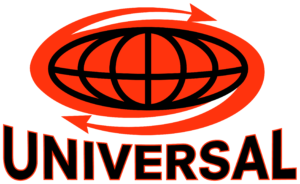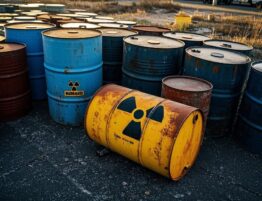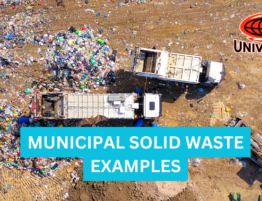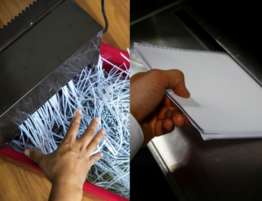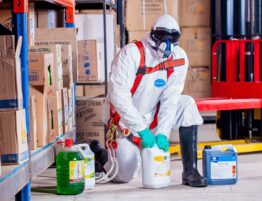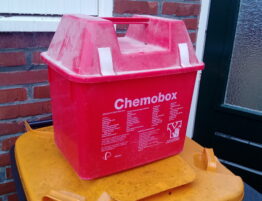
Chemotherapy Waste Disposal Guidelines for Healthcare Workers
Getting rid of chemotherapy waste the right way is very important in healthcare. These drugs are strong and can be harmful to people and the environment if not handled safely. That’s why healthcare workers must know and follow chemotherapy waste disposal guidelines. This article explains the steps to take for safe disposal and why it matters.
What Is Chemotherapy Waste?
Chemotherapy waste includes anything that touches chemotherapy drugs. This could be leftover drugs, IV bags, tubing, gloves, gowns, or wipes. There are two kinds: trace (small amounts left) and bulk (larger amounts). Even a small amount can be dangerous, so all of it must be thrown away the right way.
Why Proper Disposal Matters
If chemotherapy waste is not thrown away correctly, it can hurt people and the planet. These drugs are toxic and can cause health problems. That’s why chemotherapy waste disposal guidelines for healthcare workers are so important. If hospitals or clinics don’t follow the rules, they can also get in legal trouble.
Types of Chemotherapy Waste
There are two types of chemotherapy waste:
-
Trace Chemotherapy Waste: These are items with only small amounts of drugs left. For example, empty IV bags, gloves, or gowns. Trace chemotherapy waste disposal has different rules than bulk waste.
-
Bulk Chemotherapy Waste: These items have leftover drugs or are soaked in them. This includes full vials or used wipes. Bulk chemotherapy waste disposal must follow strict rules and is often burned at special facilities.
Chemotherapy Waste Belongs in What Color Container?
To keep waste safe, containers are color-coded. Chemotherapy waste goes into yellow chemotherapy waste containers. These are strong, don’t leak, and have clear labels.
If waste includes both chemotherapy and hormone drugs, it should go into a chemotherapy and hormone waste disposal container. These are also yellow, but they have extra labels. Knowing the chemotherapy and hormone waste disposal container color helps keep things safe and organized.
Chemotherapy Waste Disposal Containers
The right container helps keep everyone safe. Chemotherapy waste disposal containers are tough, don’t leak, and are clearly marked. Sharp items like needles should go in a special sharps container that’s also labeled for chemotherapy.
These containers should be kept close to where they’re used like patient rooms or treatment areas. This makes it easy for workers to throw things away right away and avoid spreading waste.
Chemotherapy Waste Disposal Guidelines for Healthcare Workers
Here are the most important chemotherapy waste disposal guidelines for healthcare workers:
-
Wear protective gear: Always wear gloves, gowns, and masks.
-
Sort waste correctly: Know the difference between trace and bulk waste. Use the right container.
-
Label containers: Everything must have the correct hazard symbols.
-
Follow the law: Know and follow local and national chemotherapy waste disposal regulations.
-
Don’t mix waste: Never put chemotherapy waste in regular trash.
Training is very important. All staff should learn how to safely handle and throw away chemotherapy waste. This helps prevent accidents.
Disposing of Chemotherapy Waste at Home
Some patients get chemotherapy at home. Disposing of chemotherapy waste at home must be done safely. Used items should never go in the regular trash. Healthcare workers should give patients chemotherapy waste disposal containers. These are picked up by special waste companies.
Veterinary Chemotherapy Waste Disposal
Vets also use chemotherapy drugs to treat animals. The disposal of chemotherapy drugs veterinary is just as important. Vet clinics should use yellow containers and follow the same chemotherapy waste management rules as hospitals to protect their staff and animals.
What Is the Most Common Type of Waste Stream?
Most waste in healthcare is not dangerous. It’s called general medical waste. But chemotherapy waste is hazardous and needs special care. Of all types, trace chemotherapy waste is the most common. But both trace and bulk must be thrown away safely.
Final Thoughts
Following chemotherapy waste disposal guidelines for healthcare workers protects people and the environment. Using the right containers, colors, and labels helps keep everything in order. Whether you’re in a hospital, clinic, or home care setting, safe disposal is key.
Stay safe, stay informed, and follow the right steps for chemotherapy waste disposal. It protects you, your team, and your patients.
Need Help with Chemotherapy Waste Disposal?
Proper disposal of chemotherapy waste is not just a guideline—it’s a responsibility. Make sure your facility is following the best practices to protect your staff, patients, and the environment.
For reliable and compliant chemotherapy waste disposal services, contact MyBioWaste today:
📞 Call: 855-276-9246
📧 Email: info@mybiowaste.com
📍 Location: 4459 Industrial Park Rd, Green Cove Springs, FL 32043
Let MyBioWaste handle your hazardous waste the right way safely, legally, and efficiently.
